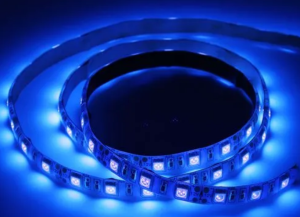Experiencing issues with your LED power supply can be frustrating, especially when you can't pinpoint the cause. Let’s explore the common reasons behind these failures and how to address them effectively.
Overheating: The Silent Killer
One of the primary reasons LED power supplies fail is due to overheating. When the internal temperature of a power supply exceeds its threshold—typically around 80°C to 100°C—it can suffer from thermal shutdown. This not only disrupts operation but can also degrade internal components over time. Ensuring adequate ventilation and checking that the ambient temperature does not exceed the recommended limits can significantly extend the lifespan of your power supply.
Inadequate Load Handling
LED power supplies are designed to operate efficiently within a specific load range. Running them under minimum load or overloading them can lead to premature failure. For instance, a power supply designed for 50 watts should not be used to drive a 10-watt load. It's crucial to match the power supply’s capacity with the load of the LED setup to maintain optimal function.
Electrical Surges and Spikes
Another common issue is damage from electrical surges or spikes. These can originate from various sources like lightning strikes, power outages, or unstable electrical grids. An unexpected surge can instantly compromise the electronic components within the power supply. Using surge protectors or investing in a power supply with built-in surge protection can help safeguard your system.

Poor Quality Components
The longevity of an led power supply often depends on the quality of its components. Cheap capacitors, for instance, might not withstand prolonged exposure to high temperatures, leading to a shorter operational life. Opting for power supplies from reputable manufacturers who use high-quality, durable components can prevent frequent failures.
Incorrect Installation
Improper installation can also be a culprit. This includes issues like loose wiring connections, incorrect electrical parameters, or incompatible dimmers that strain the power supply. Always ensure that installation follows the manufacturer's guidelines and consider professional installation to avoid these pitfalls.
Regular Maintenance Is Key
Routine checks and maintenance can catch early signs of wear and tear, preventing small issues from becoming major failures. Regularly cleaning the power supply unit and checking for secure connections can significantly improve its reliability and efficiency.
Know Your Product
Understanding the specifications and proper handling of your LED power supply is critical. Always refer to the technical documentation provided by the manufacturer for guidance on usage, capabilities, and troubleshooting. This proactive approach not only enhances performance but also extends the service life of your LED lighting system.